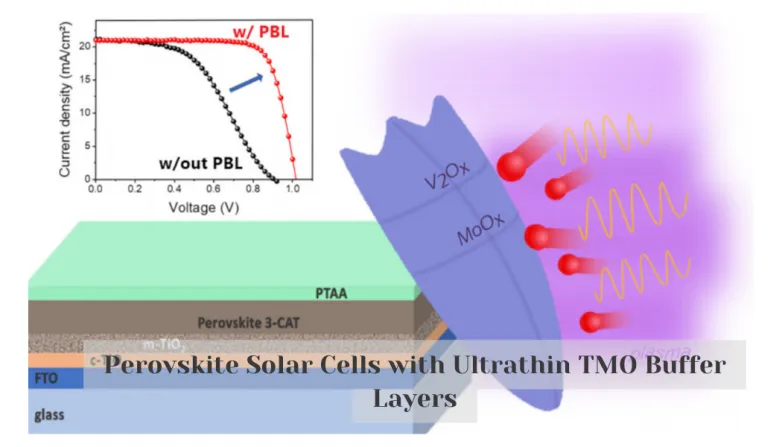Perovskite Solar Cells with Ultrathin TMO Buffer Layers
- Discover how researchers from the University of Rome, ENEA, and CNR-ISM developed a protective buffer layer to mitigate sputtering damage in perovskite solar cells for better performance and efficiency. Up to 16.44% efficiency, with no visible transmission loss.

Researchers from the University of Rome Tor Vergata, ENEA and CNR-ISM have developed a perovskite solar cell with an ultrathin protective buffer layer made of transition metal oxides (TMOs). The team tested molybdenum oxide (MoOx) and vanadium oxide (V2Ox) and found that MoOx provided the best performance, achieving an efficiency of 16.44%. The introduction of the TMO layer successfully mitigated the sputtering damage effects without impairing the average visible transmittance of the cell. The findings demonstrate that protective buffer layers could be a viable solution for mitigating the damaging effects of sputtering in the production process of perovskite solar cells for building integrated photovoltaic applications.
What is the Effect of TMO Layer on Performance of Perovskite Solar Cells?
- TMO layers are an ultrathin protective buffer layer made of transition metal oxides (TMOs) such as molybdenum oxide (MoOx) and vanadium oxide (V2Ox).
- The team found that MoOx provided the best performance, achieving an efficiency of 16.44%.
- The introduction of the TMO layer successfully mitigated the sputtering damage effects without impairing the average visible transmittance of the cell.
- The use of a TMO layer could lead to more efficient and cost-effective production methods that can increase solar cell performance.
- The protective buffer layers could be a viable solution for mitigating the damaging effects of sputtering in the production process of perovskite solar cells and used in building integrated photovoltaic applications.
- The TMO layer could also potentially improve the light trapping and optical absorption of the solar cell in order to boost efficiency.
- The technique could also be applied to other solar cell technologies, such as silicon-based cells, to improve performance.
Also read
- UbiQD Secures Landmark Quantum Dot Deal with First Solar
- Astronergy Invests $53M in Tandem Solar Cell Project
- ARENA Unveils $39M Solar Innovation Funding Round
- CNNP Optoelectronics brings utility-scale perovskite modules out of the lab
- Low-Temperature Sequential Deposition Lifts Inverted Perovskite Solar Cells Efficiency Record
